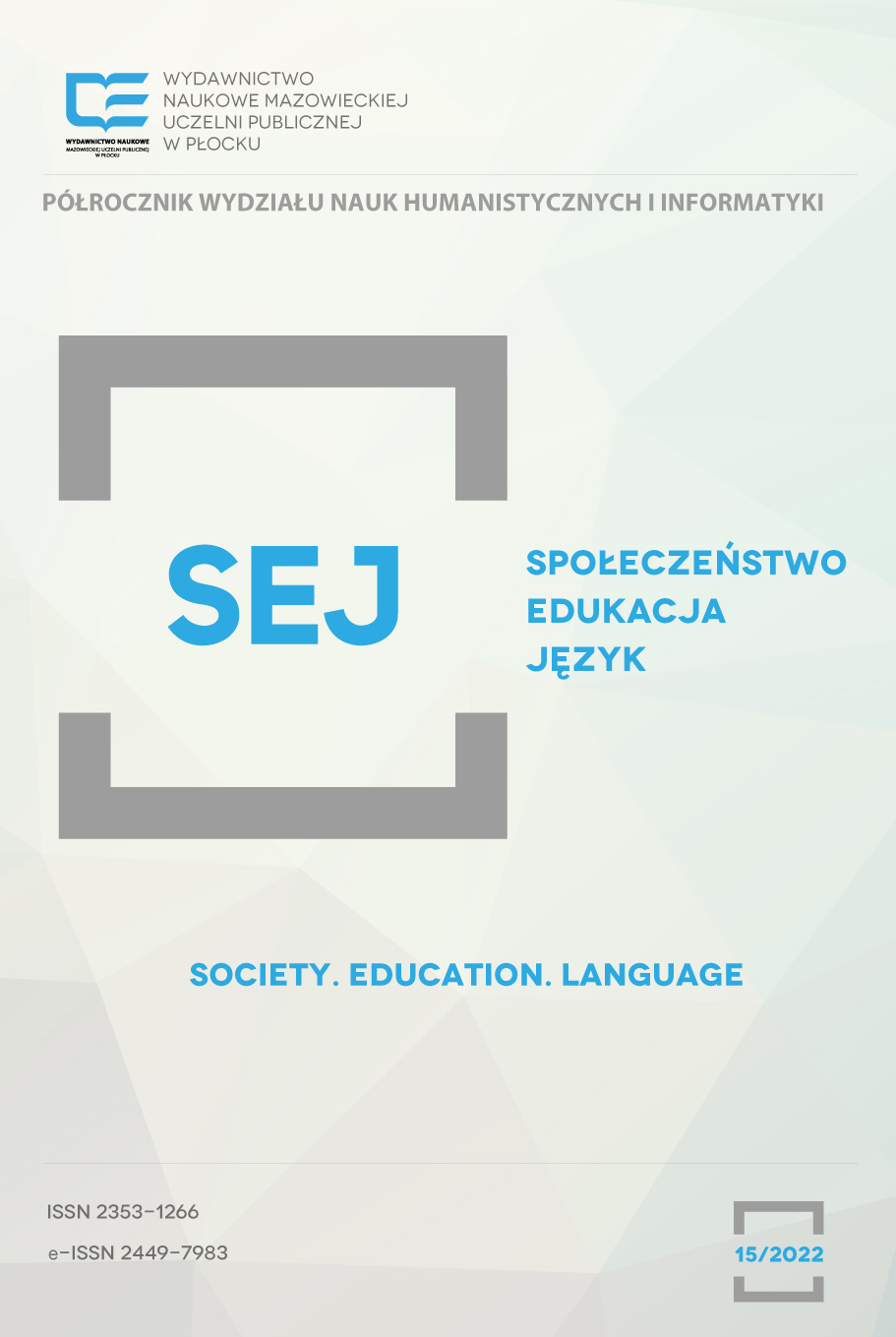Techniques of teaching children with specific learning disorders at general education and English language lessons
DOI:
https://doi.org/10.19251/sej/2022.15(15)Keywords:
specific learning disorders, techniques of work, foreign language teaching, special educational needsAbstract
The text addresses an issue of specific learning disorders (SLDs) with reference to techniques of work applied by general education and English language teachers of young learners. Due to doubts raised about adequacy of applied foreign language teaching techniques and teacher’s competence for work with learners with SLDs (Bogdanowicz 2011, Plichta 2012, Sikora-Banasik 2017), the researcher decided to compare the quality of the techniques of work presently applied by both groups of teachers. Attention was drawn to the techniques that strengthen learners’ sustainable general and emotional development. The results of the mixed type qualitative and quantitative research revealed that English language teachers, quite contrary to general education teachers, prefer traditional techniques of work, rarely apply activities that develop fine and gross motor skills and depend their teaching on the content of the applied coursebooks. In this sense, they do not support the idea of inclusive approach in language education.
References
Baines, Lawrence. 2008. A teacher’s guide to multisensory learning. Improving literacy by engaging the senses. Alexandria, Virginia USA: Association for Supervision and Curriculum Development.
Brownell, Mary Teresa, Alyson Adams, Paul T.Sindelar, Nancy Waldron. 2006. Learning from collaboration: the role of teacher qualities. Exceptional Children, vol. 72(2), pp. 169-185. https://www.researchgate.net/publication/228668927_Learning_from_Collaboration_The_Role_of_Teacher_Qualities (accessed: 10.09.2019)
Bogdanowicz, Katarzyna. 2011. Dysleksja a nauczanie języków obcych. Przewodnik dla nauczycieli i rodziców uczniów z dysleksją. Gdańsk: Wydawnictwo Harmonia.
Bogdanowicz, Marta. 1987. Integracja percepcyjno-motoryczna a specjalne trudności w czytaniu u dzieci. Gdańsk: Wydawnictwo Uniwersytetu Gdańskiego.
European Agency for Special Needs and Inclusive Education (EASNIE). 2017. Inclusive education for learners with disabilities: study for the PETI Committee. Brussels: European Agency.
Gibson, Sally. 2008. Reading aloud: a useful learning tool? ELT Journal, Vol. 62. Issue 1, pp 29-36.
Instytut Badań Edukacyjnych. 2014. Raport o stanie edukacji: liczą się nauczyciele. Red. Federowicz, Michał, Jolanta Choińska-Mike, Dominika Walczak. Warszawa: IBE.
Merisuo-Storm, Tuula. 2006. Girls and boys like to read and write different texts. Scandinavian Journal of Educational Research, Vol. 50, pp 111-125.
Ministerstwo Edukacji Narodowej i Sportu (MEN). 2005. Rozporządzenie Ministra Edukacji Narodowej z dnia 18 stycznia 2005 w sprawie warunków organizowania kształcenia, wychowania i opieki dla dzieci i młodzieży niepełnosprawnych oraz niedostosowanych społecznie w przedszkolach, szkołach i oddziałach ogólnodostępnych lub integracyjnych. Dziennik Ustaw z 2005 nr 19, poz. 167 [Journal of Laws of 2005. No. 19 item 167]
Ministerstwo Edukacji Narodowej i Sportu (MEN). 2008.Rozporządzenie Ministra Edukacji Narodowej z dnia 23 grudnia 2008 r. w sprawie podstawy programowej wychowania przedszkolnego oraz kształcenia ogólnego w poszczególnych typach szkół. Dziennik Ustaw z 2009, nr 4, poz. 17 [Journal of Laws of 2009, No. 4 item 17].
Muszyński, Marek/ Dorota Campfield/ Magdalena Szpotowicz. 2015. Badanie efektywności nauczania języka angielskiego w szkole podstawowej. Warszawa: IBE.
Perfetti, Charles. 2007. Reading ability: Lexical quality of comprehension. Scientific Studies of Reading, Vol. 11, Issue 4, pp 357-383.
Pierangelo, Roger/ George Giuliani. 2008. Classroom management for students with emotional and behavioural disorders. U.S. California: Corwin Press.
Plichta, Piotr. 2012. Przygotowanie nauczycieli do edukacji włączającej – kontekst nauczycielski in Dobre praktyki pedagogiczne szansą innowacyjnej edukacji. Red. Podgórska-Jachnik, Dorota. Warszawa: Wydawnictwo Wyższej Szkoły Pedagogicznej w Łodzi.
Siek-Piskozub, Teresa. 2001. Uczyć się bawiąc. Strategia ludyczna na lekcji języka obcego. Warszawa: Wydawnictwo Naukowe PWN
Sikora-Banasik, Dorota. 2017. Program nauczania języka angielskiego kl. I-III. Warszawa: Nowa Era
World Health Organisation. 2010. International classification of disorders ICD-10. https://icd.who.int/browse10/2010/en (accessed on 06.10.2019)
Westwood, Peter Stuart. 2004. Learning and learning difficulties: Cross-curricular perspectives. Camberwell, Victoria: ACER Press.
Zawadzka-Bartnik, Elżbieta. 2010. Nauczyciele języków obcych i ich niepełnosprawni uczniowie (z zaburzeniami i dysfunkcjami). Kraków: Impuls.
